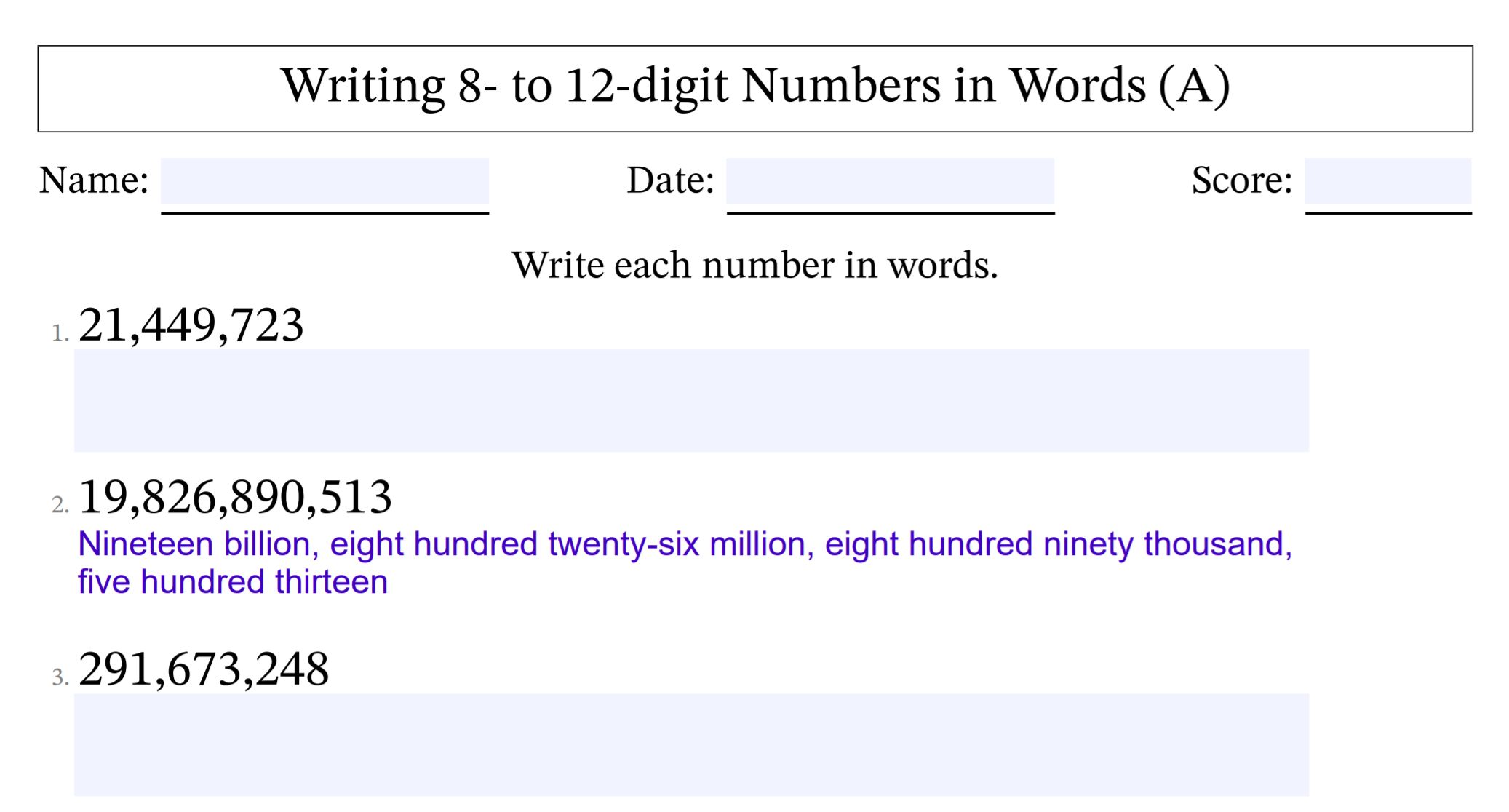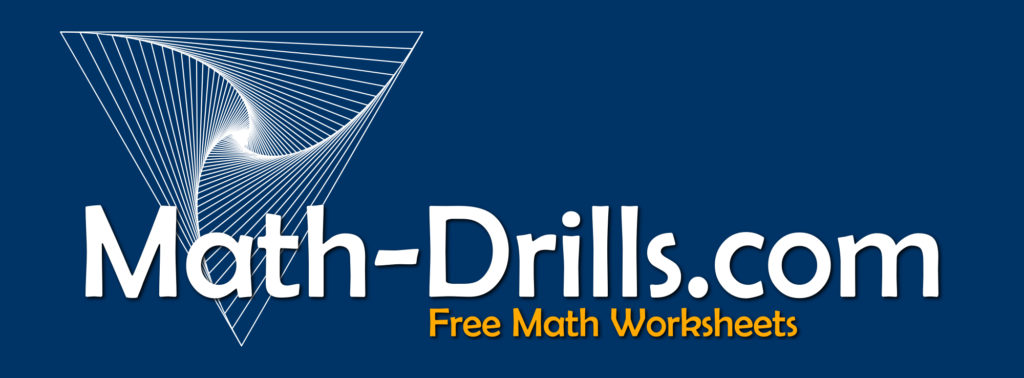
In general, we don’t often write large numbers in words, so is this a necessary skill for students to learn? With very little check/cheque writing going on these days, it may seem like the kind of skill that is unnecessary; however, when students say numbers, they are saying verbatim how a number would be written, so the usefulness in this skill isn’t necessarily to write numbers, but to learn how to say them correctly.
There were two reasons to revise the old writing numbers in words worksheets. First, the worksheets with 0 to 10 and 1 to 50 were mysteriously missing as a sharp-eyed visitor pointed out. Second, keeping with recent trends, I wanted to make them fillable and savable for those who want/need to go paperless. On the first point, I did find the worksheets in an old backup, so they were available temporarily until the new versions came along. You can see all the new versions on the Number Sense page in the Writing Numbers in Words Worksheets section.
Once I started revising the old worksheets, I noticed that there was a lot of unused space, so the worksheets up to three-digits now include 20 questions rather than 10. This means that for the 0 to 10 worksheets, each number can show up twice on the page. Beyond the three-digit versions, there are only 10 questions to allow enough space for students to print their answers on printed copies and for the fillable boxes when used on the screen.
Let’s talk about the word “and.” I learned and still say numbers without the superfluous “and,” so I have made these worksheets to match. According to my research, it seems this is a fairly common way to say numbers in the U.S. and Canada. If you would like to say 876,543 as “eight hundred and seventy-six thousand, five hundred and forty-three” rather than “eight hundred seventy-six thousand, five hundred forty-three,” you may want to revise the answer key slightly before showing it to students (or just save your own filled-out version).
The newly revised writing numbers in words worksheets have the following choices: 0 to 10, 1 to 50, 2-digit, 3-digit, 4-digit, 5-digit, 6-digit, 7-digit, 8-digit, 9-digit, 5- to 9-digit, and 8- to 12-digit. The 4-digit and up worksheets additionally have SI (Metric) versions that show the numerals with thousand separator spaces rather than commas. The options with a range of digits are new and include some numbers in the billions. If you don’t use the word “billions” like in the U.S., you may want to revise the answer key to make sure it matches how you expect your students to say large numbers.

